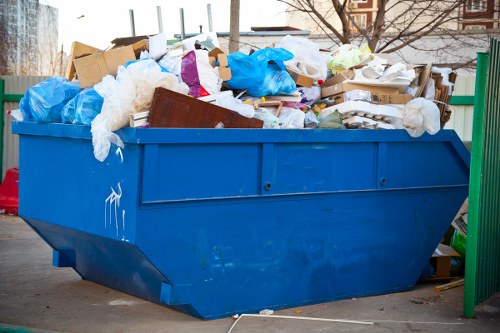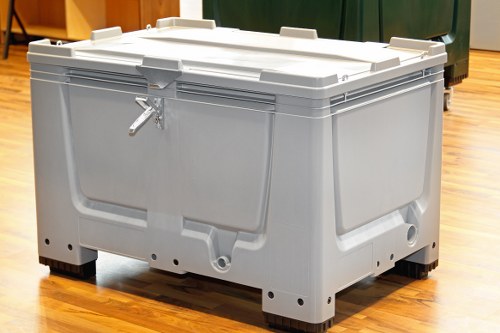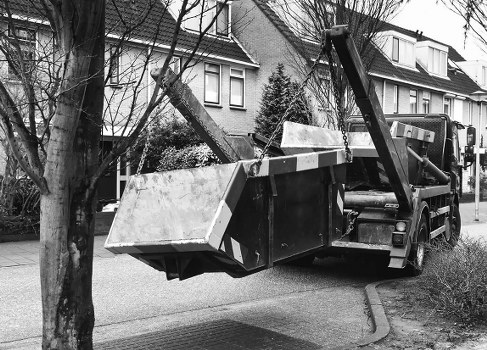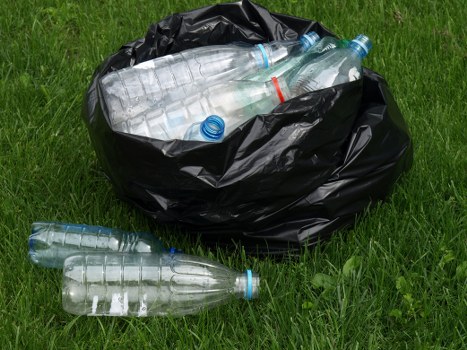Construction Waste Clearance in Plumstead: Efficient and Eco-Friendly Solutions
Understanding Construction Waste Clearance

Construction projects, whether residential or commercial, generate a significant amount of waste. Proper construction waste clearance in Plumstead is essential not only for maintaining the aesthetics of the area but also for environmental sustainability. Efficient waste management ensures that debris and leftover materials are disposed of responsibly, reducing the impact on the local ecosystem.
In Plumstead, construction waste can include materials like concrete, wood, metal, and plastics. Handling these materials requires adherence to local regulations and the use of appropriate disposal methods to prevent pollution and promote recycling.
Effective waste clearance begins with proper planning. Identifying the types of waste that will be generated and determining the most efficient ways to manage them can save time and resources. This proactive approach minimizes the disruption caused by construction activities and ensures a smoother project workflow.
Types of Construction Waste

Common Materials
The construction industry is notorious for generating a wide variety of waste materials. Some of the most common types include:
- Concrete and Masonry: Leftover concrete, bricks, and mortar.
- Wood: Lumber, plywood, and other wood materials.
- Metal: Steel beams, aluminum, and other metal scraps.
- Plastics: PVC pipes, insulation materials, and packaging.
- Drywall: Broken or surplus drywall sheets.
Each of these materials requires specific handling and disposal methods to ensure they are processed in an environmentally friendly manner.
Recycling and repurposing are key strategies in managing construction waste. By diverting materials from landfills, the construction industry can significantly reduce its carbon footprint and promote sustainable practices.
Benefits of Professional Waste Clearance Services

Hiring a professional construction waste clearance service in Plumstead offers numerous benefits. These services are equipped with the necessary tools and expertise to handle various types of waste efficiently.
Efficiency and Time Savings
Professional waste clearance teams can quickly remove debris and unwanted materials, allowing construction projects to proceed without unnecessary delays. Their experience ensures that the process is streamlined, minimizing disruptions to the workflow.
Moreover, these services often have established relationships with recycling facilities and disposal centers, ensuring that waste is handled in compliance with local regulations. This eliminates the need for project managers to navigate complex disposal requirements independently.
Additionally, timely waste removal contributes to a safer work environment by reducing clutter and potential hazards on construction sites.
Eco-Friendly Disposal Practices

Recycling and Reuse
One of the primary goals of construction waste clearance in Plumstead is to promote recycling and reuse of materials. Recycling facilities process materials like metal, wood, and concrete, transforming them into new products and reducing the demand for raw resources.
Reuse involves finding new applications for materials that would otherwise be discarded. For example, reclaimed wood can be repurposed for flooring or furniture, while metal scraps can be melted down and used in new construction projects.
By adopting these practices, construction companies contribute to sustainability efforts and support the circular economy, where materials are continuously repurposed and recycled.
Minimizing Landfill Use
Landfills are a significant environmental concern, primarily due to the long-term persistence of many waste materials. By effectively managing construction waste, the amount sent to landfills is drastically reduced.
Proper segregation of waste ensures that recyclable materials are diverted from landfills, while non-recyclable waste is minimized through careful planning and waste reduction strategies.
Furthermore, reducing landfill use helps lower greenhouse gas emissions and conserves land for other essential purposes.
Regulations and Compliance

Local Laws and Guidelines
Construction waste clearance in Plumstead must comply with local regulations and guidelines. Understanding these rules is crucial to avoid fines and ensure environmentally responsible disposal practices.
Regulations typically dictate how waste should be categorized, stored, and transported. Compliance involves proper documentation and adherence to safety standards during the waste clearance process.
Engaging with licensed and reputable waste clearance services ensures that all regulatory requirements are met, providing peace of mind and safeguarding the reputation of construction firms.
Importance of Compliance
Compliance with waste management regulations not only avoids legal repercussions but also demonstrates a commitment to environmental stewardship. It reflects positively on the construction company and builds trust with clients and the local community.
Moreover, staying informed about changes in regulations allows construction projects to adapt quickly, maintaining smooth operations and sustainable practices.
Investing in compliance is an investment in the long-term success and responsibility of construction endeavors.
Choosing the Right Waste Clearance Service
Factors to Consider
Selecting the appropriate construction waste clearance service in Plumstead involves evaluating several key factors:
- Experience: Look for companies with a proven track record in handling various types of construction waste.
- Certifications: Ensure the service is licensed and adheres to local waste management regulations.
- Recycling Capabilities: Choose a service that prioritizes recycling and sustainable disposal methods.
- Equipment: Modern and well-maintained equipment ensures efficient and safe waste removal.
- Customer Reviews: Positive feedback indicates reliability and quality service.
Taking the time to assess these factors leads to a more effective and satisfactory waste clearance experience.
Additionally, communicating your specific needs and expectations with the service provider helps tailor the waste management process to your project's requirements.
Cost Considerations
While cost is an important factor, it should not be the sole consideration. Opting for the cheapest service may result in subpar waste management practices and potential regulatory issues.
Instead, evaluate the value offered by the service, including efficiency, compliance, and environmental responsibility. Investing in a reputable service can lead to long-term savings by avoiding delays and fines.
Requesting detailed quotes and comparing offerings can help you make an informed decision that balances quality and affordability.
Steps in the Waste Clearance Process
1. Assessment and Planning
The initial step involves assessing the scope of the project and identifying the types and quantities of waste expected. This assessment helps in formulating a clear plan for waste management, including timelines and resource allocation.
Effective planning ensures that waste clearance aligns seamlessly with construction activities, preventing bottlenecks and ensuring continuous progress.
Additionally, identifying recyclable and reusable materials during this stage facilitates their proper segregation and processing.
2. Collection and Segregation
Once the assessment is complete, the next step is to collect and segregate the waste. Segregation involves categorizing waste into different types, such as metals, plastics, wood, and hazardous materials.
This organized approach streamlines the disposal process and enhances recycling efforts. Proper segregation reduces contamination, making it easier to process materials efficiently.
Moreover, handling hazardous waste separately ensures that it is dealt with in a safe and compliant manner, protecting both workers and the environment.
3. Transportation
Transportation involves moving the segregated waste from the construction site to appropriate disposal or recycling facilities. This step requires careful handling to prevent spillage and contamination.
Professional waste clearance services employ specialized vehicles and equipment to ensure safe and efficient transportation. Timely transportation minimizes the risk of accumulated waste affecting the construction site.
Additionally, adhering to transportation regulations is crucial for avoiding legal issues and maintaining environmental integrity.
4. Disposal and Recycling
The final step is the proper disposal and recycling of the collected waste. Recycling facilities process materials like metal, wood, and concrete, transforming them into new products and reducing the need for virgin materials.
For non-recyclable waste, responsible disposal methods are employed to minimize environmental impact. This includes adhering to landfill regulations and using environmentally friendly practices.
Continuous monitoring and evaluation of disposal methods ensure that the waste clearance process remains sustainable and compliant with evolving standards.
Innovative Technologies in Waste Management
Advanced Sorting Systems
Recent advancements in waste management technologies have revolutionized the construction waste clearance process. Automated sorting systems enhance the efficiency and accuracy of segregating materials, reducing the reliance on manual labor.
These systems utilize sensors and artificial intelligence to identify and categorize different types of waste, streamlining the recycling process and increasing overall productivity.
Implementing advanced sorting technologies leads to higher recycling rates and reduces the environmental footprint of construction projects.
Eco-Friendly Disposal Methods
Innovative disposal methods focus on minimizing environmental impact and promoting sustainability. Techniques such as waste-to-energy conversion transform non-recyclable waste into usable energy, reducing dependence on fossil fuels.
Additionally, biodegradable materials and eco-friendly packaging contribute to more sustainable construction practices, further lowering the environmental impact.
Adopting these technologies not only benefits the environment but also positions construction companies as leaders in sustainable development.
Digital Waste Tracking
Digital waste tracking systems provide real-time data on waste generation, collection, and disposal. This transparency allows for better planning and management, ensuring that waste clearance processes are efficient and compliant with regulations.
Moreover, data-driven insights help identify areas for improvement, enabling construction projects to adopt best practices in waste management.
Implementing digital tracking enhances accountability and fosters a culture of continuous improvement in construction waste clearance.
Challenges in Construction Waste Clearance
Volume of Waste
One of the significant challenges in construction waste clearance is managing the sheer volume of waste generated. Large-scale projects produce vast amounts of debris, requiring robust and scalable waste management solutions.
Handling this volume demands efficient planning, adequate resources, and effective coordination between various stakeholders to ensure timely clearance and disposal.
Overcoming this challenge involves investing in appropriate infrastructure and adopting streamlined processes to manage waste effectively.
Compliance with Regulations
Adhering to local and national waste management regulations can be complex and time-consuming. Ensuring compliance requires a thorough understanding of the legal requirements and continuous monitoring of regulatory changes.
Failure to comply can result in hefty fines, project delays, and damage to the company's reputation. Therefore, staying informed and proactive in compliance efforts is essential.
Collaborating with knowledgeable waste clearance services can aid in navigating the regulatory landscape and maintaining compliance.
Cost Management
Effective construction waste clearance involves significant costs, including transportation, processing, and disposal fees. Balancing these costs with project budgets is a persistent challenge.
Investing in efficient waste management practices can lead to long-term savings by reducing the volume of waste generated and optimizing disposal methods.
Additionally, exploring cost-effective recycling and reuse options can mitigate expenses while promoting sustainability.
Future Trends in Waste Clearance
Sustainable Construction Practices
The future of construction waste clearance lies in the adoption of sustainable practices. Green building techniques emphasize the reduction of waste generation through careful planning and the use of recyclable materials.
Integrating sustainability into construction projects not only benefits the environment but also enhances the marketability of the buildings, attracting eco-conscious clients and stakeholders.
As awareness of environmental issues grows, sustainable waste management will become a standard expectation in the construction industry.
Circular Economy Integration
The circular economy model promotes the continuous use and reuse of materials, minimizing waste and conserving resources. In construction, this involves designing buildings with materials that can be easily disassembled and repurposed.
Implementing circular economy principles requires collaboration across the supply chain, from material suppliers to waste clearance services, fostering a more sustainable and resilient construction ecosystem.
As this model gains traction, construction waste clearance will increasingly focus on maximizing material reuse and minimizing environmental impact.
Technological Advancements
Continued advancements in technology will further enhance the efficiency of waste clearance processes. Innovations such as robotics, artificial intelligence, and advanced data analytics will streamline operations and improve accuracy in waste management.
These technologies will enable more precise waste segregation, reduce labor costs, and enhance the overall sustainability of construction projects.
Embracing these technological trends will position the construction industry at the forefront of sustainable development and waste management innovation.
Conclusion
Importance of Effective Waste Clearance
Effective construction waste clearance in Plumstead is a critical component of sustainable construction practices. It ensures that waste is managed responsibly, reducing environmental impact and promoting the reuse and recycling of materials.
By partnering with professional waste clearance services, construction projects can achieve greater efficiency, compliance, and sustainability. This collaboration not only benefits the immediate project but also contributes to the broader goal of environmental stewardship.
Investing in proper waste management practices is an investment in the future, fostering a cleaner, safer, and more sustainable environment for the community.
Take Action Today
Don't let construction waste hinder your project's success. Contact us today to learn how our expert waste clearance services in Plumstead can streamline your construction process and promote sustainable practices. Book your service now and take the first step towards a cleaner and more efficient construction site.